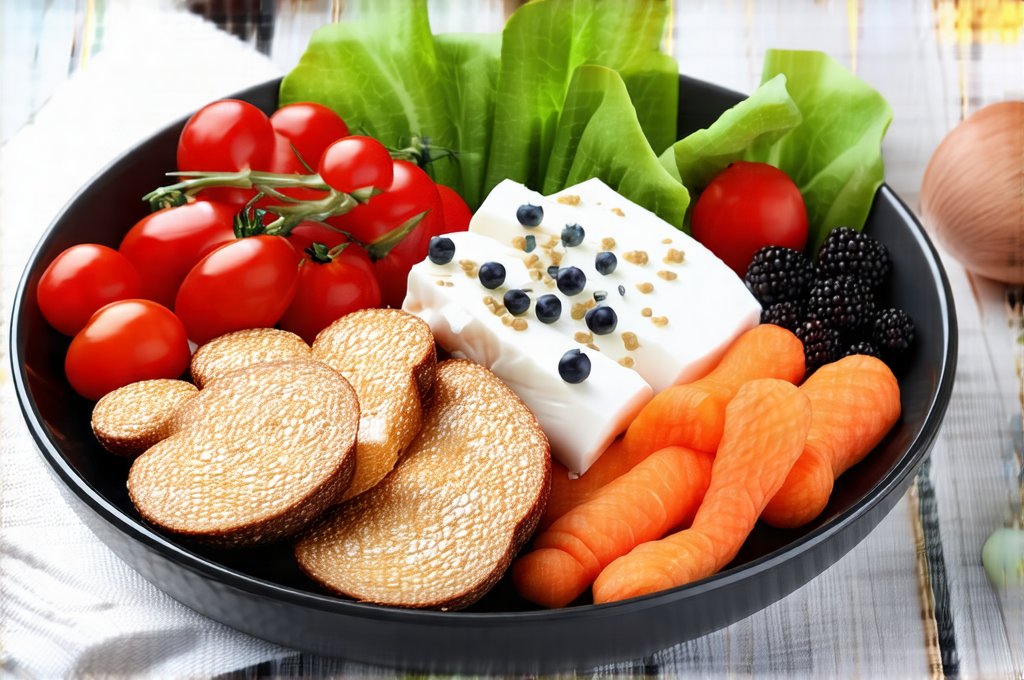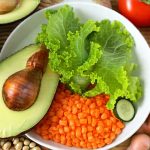Digestion is often an overlooked aspect of overall well-being, yet it profoundly impacts energy levels, nutrient absorption, immunity, and even mental clarity. Many people experience digestive discomfort – bloating, gas, heartburn, irregularity – without realizing that simple adjustments to how foods are combined can make a significant difference. Often, we focus solely on what we eat (choosing healthy ingredients) but neglect the crucial element of food combining—the synergistic or antagonistic relationships between different food groups as they navigate our digestive system. A mindful approach to food combinations isn’t about restrictive dieting; it’s about optimizing digestion for greater comfort and enhanced nutrient uptake, allowing your body to thrive on the foods you already enjoy. If you are prone to nausea after eating, consider how to structure meals for better digestion.
The core principle behind effective food combining stems from recognizing that different foods require vastly different digestive environments. Proteins need an acidic environment with enzymes like pepsin, while carbohydrates primarily utilize alkaline conditions and amylase. When we mix incompatible foods, it can overwhelm the digestive system, leading to fermentation, gas production, and malabsorption. This isn’t a rigid set of rules, but rather a flexible framework for understanding how food interactions impact your individual experience. By applying these principles thoughtfully, you can unlock a more comfortable and nourishing relationship with food, ultimately contributing to better health and vitality. Understanding how to combine foods is essential for a healthy gut.
Understanding the Basics of Food Combining
Food combining is predicated on the idea that our bodies are not designed to efficiently digest multiple macronutrients – proteins, carbohydrates, and fats – simultaneously in large quantities. The digestive process begins in the mouth and continues through the stomach and small intestine. Each stage requires specific enzymes and pH levels. Proteins require a highly acidic environment for breakdown, while carbohydrates need an alkaline one. Fats slow down digestion considerably. When we combine foods that demand conflicting digestive processes, it can lead to incomplete digestion and subsequent discomfort. This isn’t about eliminating food groups; it’s about sequencing them intelligently.
- Focus on Food Families: Grouping foods based on their macronutrient content (protein sources, carbohydrate sources, fats) helps simplify the process.
- Prioritize Simple Combinations: Start with easy combinations like protein + vegetables or carbohydrates + vegetables before tackling more complex meals.
- Listen to Your Body: Pay attention to how different food combinations make you feel. Digestive discomfort is a sign that something isn’t working for you.
Ultimately, the goal is not perfection but mindful awareness. A little experimentation and observation can go a long way in identifying which combinations support your digestive health and overall well-being. Remember, this approach is about enhancing digestion, not imposing restrictions. It’s about finding what works best for your unique body. To help with planning, you could build a safe weekly menu for a sensitive digestive system.
Common Food Combination Conflicts & Synergies
Certain food pairings are notorious for causing digestive issues. For example, combining a large serving of protein with complex carbohydrates (like steak and potatoes) can be challenging because the differing digestive requirements put a strain on the system. The protein requires acidic conditions to break down, while carbs need alkaline, potentially leading to undigested food fermenting in the gut. Similarly, fruit should generally be eaten alone, as it digests quickly and can cause fermentation if combined with slower-digesting foods.
However, there are also synergistic combinations that promote optimal digestion. Combining leafy greens with lean protein is an excellent example—the fiber in the greens supports digestive regularity while the protein provides sustained energy. Fats, when consumed in moderation and paired appropriately (such as avocado with salad), can actually aid digestion by slowing down the process and enhancing nutrient absorption. Understanding these interactions empowers you to make informed food choices that support a happy gut. It’s also important to learn how to read food labels for better digestive health, so you know what you are consuming.
Decoding Specific Food Interactions
The key to successful food combining lies in understanding how different foods interact with each other during digestion. Here’s a closer look at some specific scenarios:
Fruits:
– Fruits are best consumed on an empty stomach, as they digest quickly and don’t require extensive breakdown. Combining them with proteins or fats can cause fermentation, leading to bloating and gas.
– Melons should be eaten separately from other fruits due to their faster digestion rate.
– Sweet fruits (like bananas and mangoes) are best in smaller portions.
Proteins:
– Proteins require an acidic environment for digestion. Avoid combining them with large quantities of carbohydrates, as the carbs demand alkaline conditions.
– Combining protein with non-starchy vegetables is generally well-tolerated.
– Dairy can be particularly difficult to digest for some and may cause issues when combined with other foods.
Carbohydrates:
– Complex carbohydrates (like grains, potatoes, and legumes) should ideally be paired with non-starchy vegetables.
– Avoid combining complex carbs with large amounts of protein or fat.
– Simple carbohydrates (like sugars and refined starches) are best limited overall.
The Role of Fats in Digestion & Combining
Fats often get a bad reputation, but they play a vital role in digestion and nutrient absorption. They slow down the digestive process, allowing for more thorough nutrient uptake. However, how you combine fats matters significantly.
- Healthy Fats with Vegetables: Avocado with salad, olive oil on roasted vegetables, or nuts with greens are excellent combinations.
- Avoid Combining Large Amounts of Fat with Protein & Carbs: This can overwhelm the digestive system and lead to sluggishness.
- Focus on Quality Fats: Prioritize unsaturated fats from sources like avocados, nuts, seeds, and olive oil over saturated and trans fats.
A small amount of healthy fat can actually enhance digestion, but excessive amounts or improper pairings can create problems. The goal is balance and mindful inclusion. You may need to adjust recipes for better digestive tolerance.
Practical Tips for Implementing Food Combining
Implementing food combining doesn’t have to be overly complicated. Start with simple adjustments and gradually incorporate more principles as you become comfortable.
- Plan Your Meals: Thinking ahead about how foods will interact can help you make better choices.
- Separate Foods at Mealtime: If possible, avoid mixing too many different macronutrients on your plate. Focus on one main component (protein, carbs, or fats) and pair it with supporting vegetables.
- Chew Your Food Thoroughly: This is crucial for all digestion, but especially when combining foods. Proper chewing breaks down food mechanically and stimulates enzyme production.
- Hydrate Well: Water aids in the digestive process and helps move food through the system.
- Listen to Your Body: Pay attention to how different combinations make you feel and adjust accordingly. There is no one-size-fits-all approach, so find what works best for you. Consider also how to rotate foods and avoid digestive fatigue from repetition or sensitivity.


















